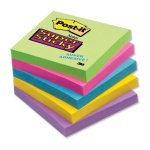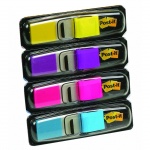Field Guides
In some events (such as Forestry), students are allowed commercially published field guides that can be tabbed or annotated. Note that in recent years most events have begun to move away from allowing field guides. As of the 2018 season, Herpetology allows field guides, but only as a replacement for a three-ring binder; teams may not bring both.
Using a Field Guide
There are many ways to use a field guide to prepare for an event. They serve as very helpful study tools and can be used to add information to a binder. Even if an event does not allow a field guide in the test, picking one up to prepare with can be a good way to find information. Some teams may get their field guides hole punched and place them in their binder, or remove pages from the guide and place them alongside written notes. The key to using a field guide is learning how it is laid out and where important information is located. Making notes in a field guide is another efficient way to use them. If the guide is missing important information for a specific event, it is easy to either write on the page or add sticky notes with information.
Choosing a Field Guide
The types of field guides available for an event typically depend on what the event is. Some events such as Rocks and Minerals may only have a handful of field guides available, but events such as Herpetology may have a wide variety of field guides available. Events having to do with animal identification typically have a variety of field guides available on the state and national level. State level competitions tend to focus on specimens that can be found in that area, and the areas that they can be found.
Choosing a field guide to use is something that should be taken especially seriously if a student plans on using the guide at competition. Field guides should have good quality pictures and have information that is easy to parse quickly. Any field guide can be a good field guide if it is worked with enough, but some field guides are easier to start using than others. If the field guide is going to be placed in a binder, pages can also be removed and pages can be added from other field guides. This is useful if a team prefers the pictures from one field guide but the information from another.
Tabbing
Field guides are typically less organized than written notes are, as students can not control where information is placed. However, placing tabs in a field guide can make it much easier to use and find information. Tabbing is especially useful when a field guide has more information than what is used for the event, or when a field guide is divided into sections. There are a few options that students have for what material they choose to tab with.
Post-its/Sticky Notes
One material is the ordinary Post-it or sticky note. Sticky notes can hold more information than regular flags can, so more information about a section can fit onto the outside of a tab. However, they are easy to tear or remove from a field guide if care is not taken. Sticky notes can also be used for annotating field guides and making notes without messing up the pages.
Pros
- Easily removable
- Thin and shapeable; can cut them to preferred sizes
- Inexpensive (Averages $4.00-$5.00 for one 3x3 cube, 470 sheets)
- Easily found in stores and online
Cons
- Adhesive is not very powerful, so the tab may lose its "stickiness" quickly
- Must be cut down to size, as the sheets are generally too big for most books
- Can curl if the field guide is used frequently
Flags
Flags are similar to sticky notes in that they also have a small strip of adhesive on one side. However, flags are usually smaller and thinner. They may be made of paper or a thin, transparent plastic. Plastic flags are typically very robust and good for quick page turns. They come in a variety of sizes, with thin flags being good for marking smaller sections and large rectangular flags being good for marking important information. Larger plastic flags are typically stiffer than smaller or paper flags.
Pros
- Minimal if any resizing
- Can fit multiple on one page
- Also inexpensive
- Easily located in stores and online
- Transparent flags can be used for highlighting
Cons
- May tear easily, especially paper flags
- Small, so little room to write on them



